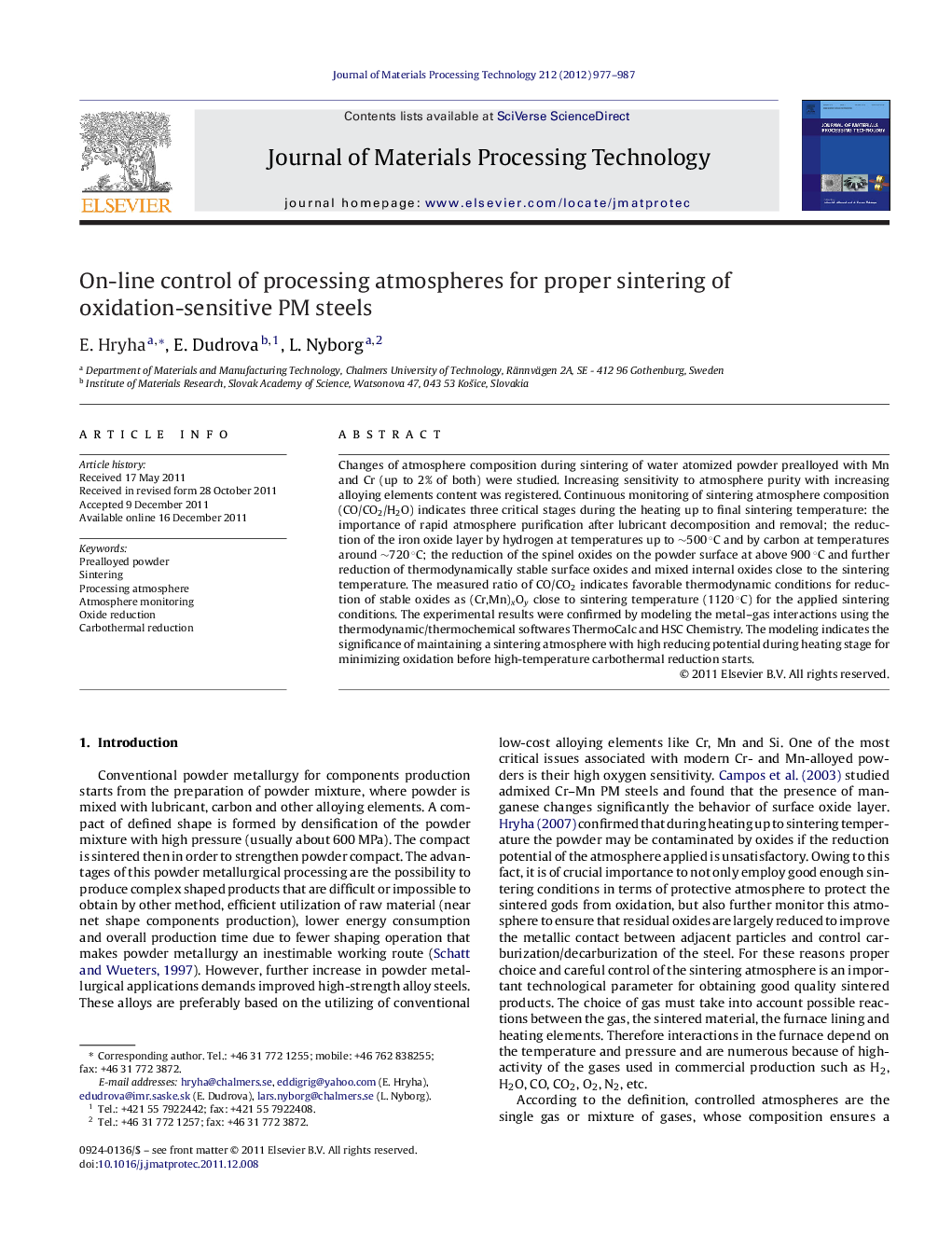| کد مقاله | کد نشریه | سال انتشار | مقاله انگلیسی | نسخه تمام متن |
|---|---|---|---|---|
| 795965 | 902761 | 2012 | 11 صفحه PDF | دانلود رایگان |

Changes of atmosphere composition during sintering of water atomized powder prealloyed with Mn and Cr (up to 2% of both) were studied. Increasing sensitivity to atmosphere purity with increasing alloying elements content was registered. Continuous monitoring of sintering atmosphere composition (CO/CO2/H2O) indicates three critical stages during the heating up to final sintering temperature: the importance of rapid atmosphere purification after lubricant decomposition and removal; the reduction of the iron oxide layer by hydrogen at temperatures up to ∼500 °C and by carbon at temperatures around ∼720 °C; the reduction of the spinel oxides on the powder surface at above 900 °C and further reduction of thermodynamically stable surface oxides and mixed internal oxides close to the sintering temperature. The measured ratio of CO/CO2 indicates favorable thermodynamic conditions for reduction of stable oxides as (Cr,Mn)xOy close to sintering temperature (1120 °C) for the applied sintering conditions. The experimental results were confirmed by modeling the metal–gas interactions using the thermodynamic/thermochemical softwares ThermoCalc and HSC Chemistry. The modeling indicates the significance of maintaining a sintering atmosphere with high reducing potential during heating stage for minimizing oxidation before high-temperature carbothermal reduction starts.
► Monitoring of processing atmosphere during sintering of alloyed PM steels.
► Iron oxide layer is efficiently reduced by hydrogen at low temperatures.
► Stable particulate oxides can be reduced by carbothermal reduction during sintering.
► Continuous atmosphere monitoring (CO/CO2/H2O/O2) is needed to avoid oxidation.
► Transformation from spinel MnFe2O4, FeCr2O4 and MnCr2O4 to mixed (Cr,Mn)xOy oxides.
Journal: Journal of Materials Processing Technology - Volume 212, Issue 4, April 2012, Pages 977–987